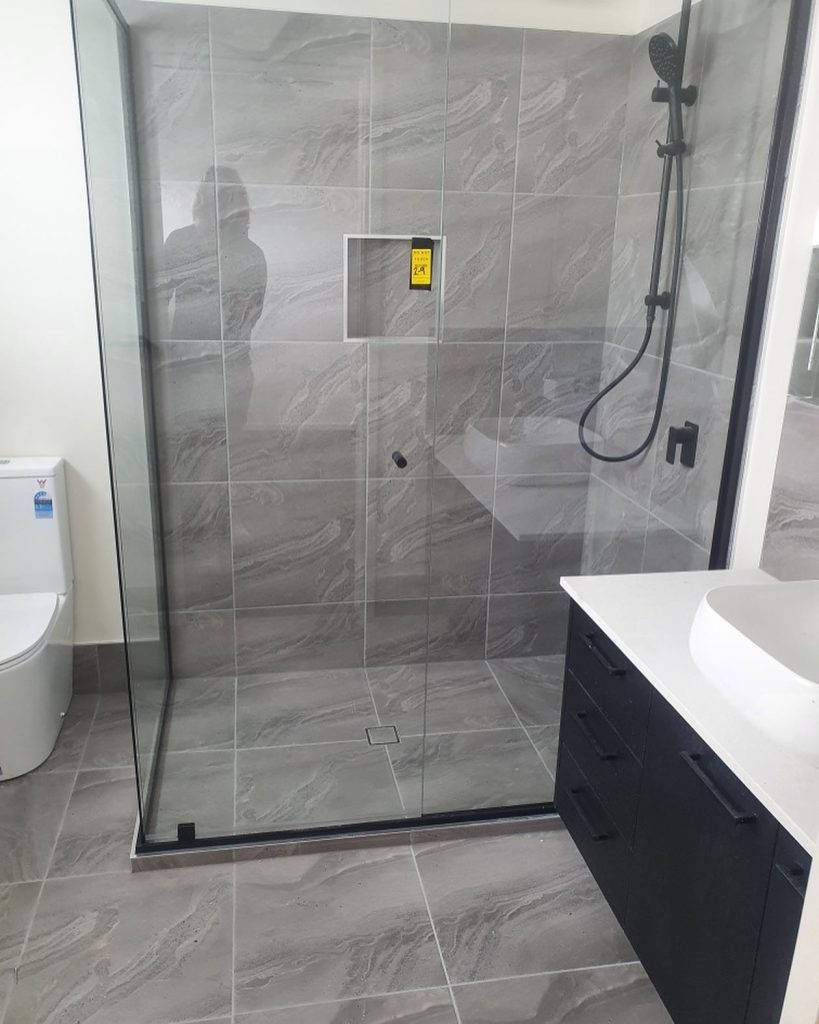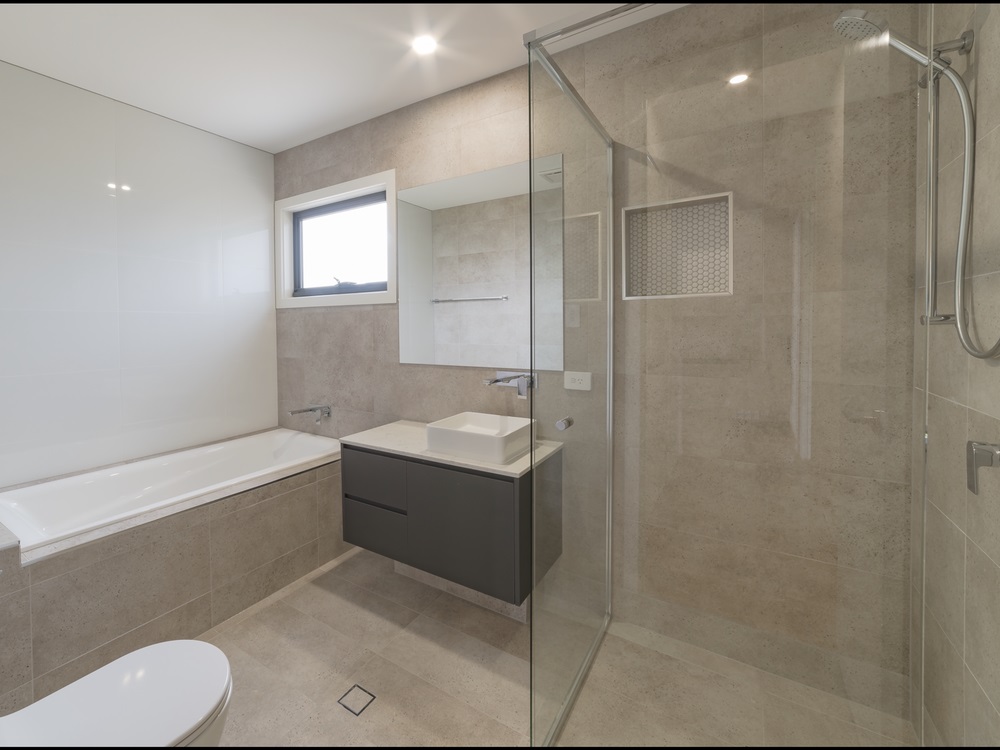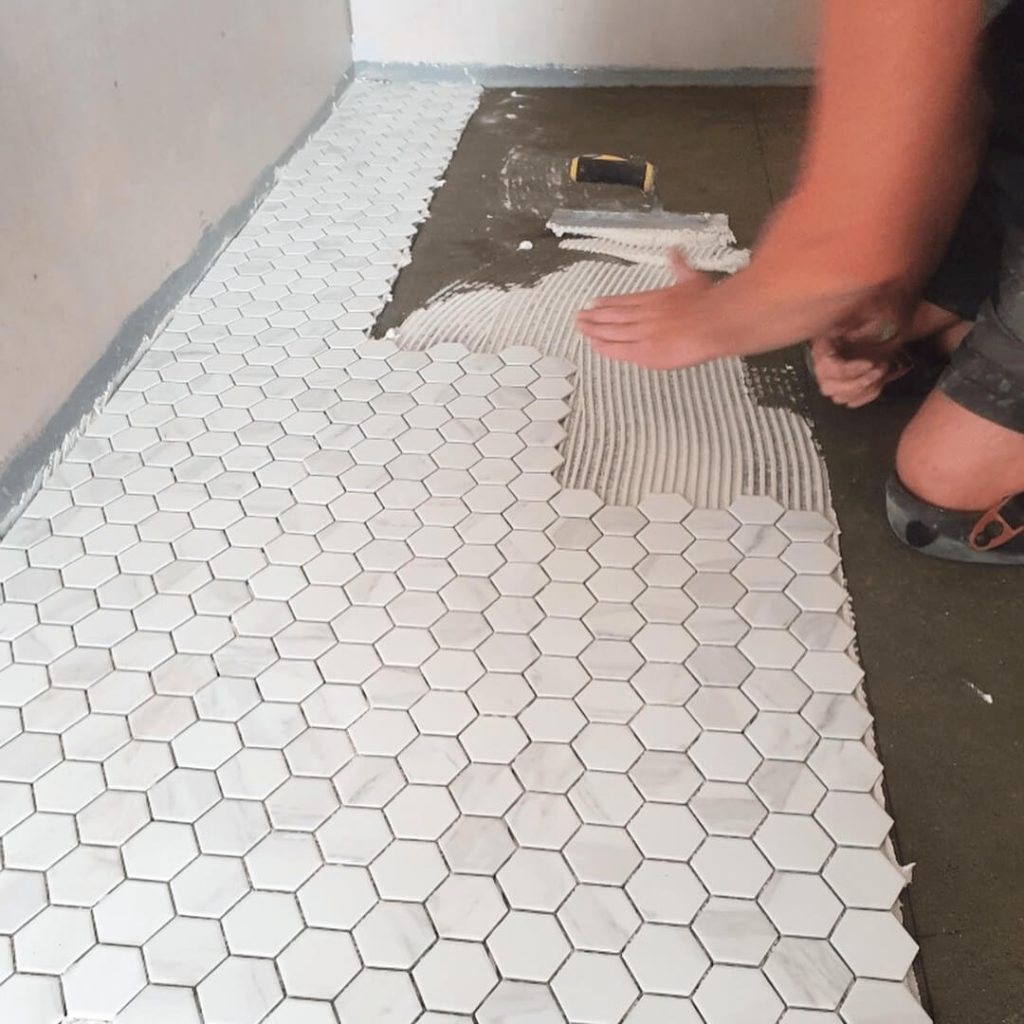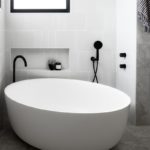Essential Tips for Selecting the Perfect Bathroom Tiles: Focus on porcelain tiles for flooring, evaluate the thickness of tiles for wall and floor applications, ensure batch consistency, check slip ratings for bathroom flooring, and allocate budget wisely towards feature areas.
Utilise high-end tiles sparingly to create an impactful visual statement and opt for standard-sized tiles to minimise labour expenses.
When it comes to selecting tiles for a bathroom renovation, the process can be quite daunting. With a plethora of similar-looking options in shades of white, beige, and grey, differentiating between them can be challenging, especially with their varying price points.
Grasping the nuances of tile pricing and understanding the critical factors that influence your decision can help you make informed choices, thereby avoiding costly errors, saving money, and achieving a luxurious finish.
This guide provides essential insights for Brisbane homeowners to ensure they make intelligent, budget-friendly decisions when choosing bathroom tiles.

Understanding the Variability in Tile Pricing: Key Factors to Consider
Examining Material Composition for Optimal Durability
Porcelain tiles are renowned for their density, reduced porosity, and enhanced durability compared to standard ceramic tiles. They are crafted from finer clay types and subjected to higher firing temperatures, resulting in increased resilience which often correlates with a higher price.
In bathrooms, where exposure to water and the need for longevity are paramount, opting for porcelain tiles generally represents a more prudent investment. However, ceramic tiles have significantly improved over the years, offering affordable solutions that are well-suited for walls and low-traffic areas.
The Impact of Tile Manufacturing on Quality and Cost
The quality of tiles extends beyond their material composition; the manufacturing process plays a critical role.
Single-fired tiles tend to be less expensive but may exhibit inconsistencies in quality. In contrast, double-fired tiles offer richer finishes, more vibrant colours, and superior durability, making them a worthwhile investment for discerning homeowners.
Tiles with rectified edges are cut using precise machinery, ensuring perfect uniformity. Although these tiles come at a higher price point, they allow for minimal grout lines, creating a seamless and contemporary aesthetic that many homeowners desire.
Understanding Tile Thickness for Structural Integrity
When it comes to selecting tiles, it’s crucial to recognise that tiles intended for flooring must be thicker and more robust than those designated for wall applications.
For instance, wall tiles typically range from 6 to 8mm in thickness, whereas floor tiles generally measure between 8 and 12mm.
- Wall tiles usually measure between 6–8mm thick.
- Floor tiles typically range from 8–12mm thick.
Overpaying for thick, heavy-duty tiles when only wall coverage is required can lead to unnecessary expenses. It’s important to match tile thickness to the intended location to maximise your budget effectively.
Evaluating Brand Reputation Versus Quality in Tile Selection
Branding in the tile industry can significantly inflate costs without providing equivalent benefits.
Renowned European brands such as Porcelanosa and Marazzi often charge premium prices based on their reputation rather than on quality alone.
Brisbane renovators should direct their attention towards the actual quality of materials, the method of firing, and slip resistance, rather than relying solely on brand names when making selections.

Maximising Your Tile Budget: Strategies for Quality and Affordability
Making thoughtful choices can result in a sophisticated bathroom appearance without exceeding your budget. Below are practical strategies to optimise your tile expenditure.
Combine Premium and Standard Tiles:
Incorporate high-end feature tiles on a focal wall or within a specific niche, while using more economical tiles in less visible areas.
Opt for Larger Format Tiles:
Larger tiles, such as those measuring 600x600mm, cover more surface area with fewer grout lines, creating the illusion of spaciousness in smaller bathrooms while also reducing labour costs.
Stick with Standard Sizes:
Choosing non-standard tile sizes can significantly increase both purchase and installation costs. Opt for standard sizes to ensure savings.
Seek Out Clearance or End-of-Run Stock:
High-quality tiles are often available at discounted prices at the end of production runs. Purchasing discontinued tiles can lead to substantial savings, but ensure you buy an extra 10–15% for future maintenance needs.
Prioritise Durable Tiles for Floors and High-Traffic Areas:
Allocate more funds towards tiles for flooring and wet zones where durability is essential, while utilising cost-effective options in dry or low-traffic spaces.
Unearthing the Differences in Tile Quality
While many bathroom tiles may appear similar, significant differences lie beneath the surface that can greatly impact your renovation.
Consistency of Shade:
Inexpensive tiles often display inconsistent colours across batches. Always verify batch numbers prior to making a purchase to avoid mismatches.
Quality of Glazing:
Inferior glazes tend to chip and stain more quickly. High-quality glazing is resistant to scratching and absorbs less moisture, which is particularly crucial in wet areas like showers.
Porosity Levels:
Tiles that are highly porous can result in water ingress and cracking over time, a frequent issue with less expensive ceramics.
Slip Resistance Ratings:
Bathroom floor tiles should meet or exceed an R10 slip resistance rating as per Australian standards to ensure safety in wet conditions.
Failing to assess these factors may transform what seems like a simple tile choice into a costly repair and replacement ordeal.
Understanding the Cost Implications of Grout Selection
While the choice of tiles sets the overall aesthetic for your bathroom, the selection of grout is equally crucial as it influences durability, visual appeal, and maintenance requirements.
Exploring Grout Costs and Material Options
Standard Budget Grout:
Traditional cement-based grouts are cost-effective and suitable for low-moisture environments. However, they are porous and may discolour or crack over time, particularly in showers and high-traffic bathrooms.
Premium Grout Options:
Grouts that are epoxy-based or modified with polymers resist stains, cracking, and moisture absorption. Although their upfront costs are higher, they frequently yield long-term savings through decreased maintenance and repair needs.
Premium grout options also provide vibrant, lasting colours that maintain their brilliance even with daily use.
How Tile Size Influences Grout Costs
Smaller tiles result in a higher grout requirement.
- Mosaic and small-format tiles necessitate significantly more grout, not only in volume but also in labour during installation.
- Large-format tiles (600x600mm or larger) minimise grout lines, reducing both material and labour costs.
If you are opting for smaller tiles for aesthetic appeal (such as penny rounds or subway patterns), be sure to budget for premium grout. The visibility of grout lines increases the importance of using a durable, stain-resistant product.

Your Essential Tile Buying Checklist for Bathroom Renovations
- Prioritise porcelain tiles for floors and wet areas.
- Select ceramic tiles for walls where applicable.
- Confirm tile thickness based on the intended installation location.
- Verify batch consistency to avoid colour mismatches.
- Check slip ratings, especially for bathroom flooring.
- Invest in higher quality tiles for floors and splash zones.
- Be strategic: allocate budget carefully, splurging selectively on areas that create visual impact.
Feel free to reach out to us for more innovative tiling ideas that can help keep your bathroom renovation within budget.



Selecting bathroom tiles can indeed feel overwhelming, especially with so many options available! I completely resonate with your point about the challenge of distinguishing between shades like white, beige, and grey.
This post raises some significant points that resonate with the often overwhelming experience of selecting bathroom tiles. The emphasis on porcelain tiles for flooring is particularly noteworthy, considering their durability and low maintenance. I have personally found that opting for porcelain not only provides a sophisticated aesthetic but also contributes to longevity, which is vital in a space that’s frequently exposed to moisture.
I found your insights on selecting bathroom tiles particularly relevant, especially considering the overwhelming choices available in today’s market. As someone who recently undertook a bathroom renovation, I can definitely relate to the challenge of differentiating between seemingly identical options in those classic shades of white and grey. I also learned the hard way about the importance of understanding tile specifications, particularly the thickness and slip ratings you mentioned.
This guide nails it! I remember my last bathroom renovation all too well—let’s just say the “porcelain throne” ended up being the “porcelain pain-in-the-neck” thanks to my tile selection woes. Who knew that choosing tiles could feel like trying to decide between a million shades of beige, each one whispering sweet nothings about its “unique charm”?